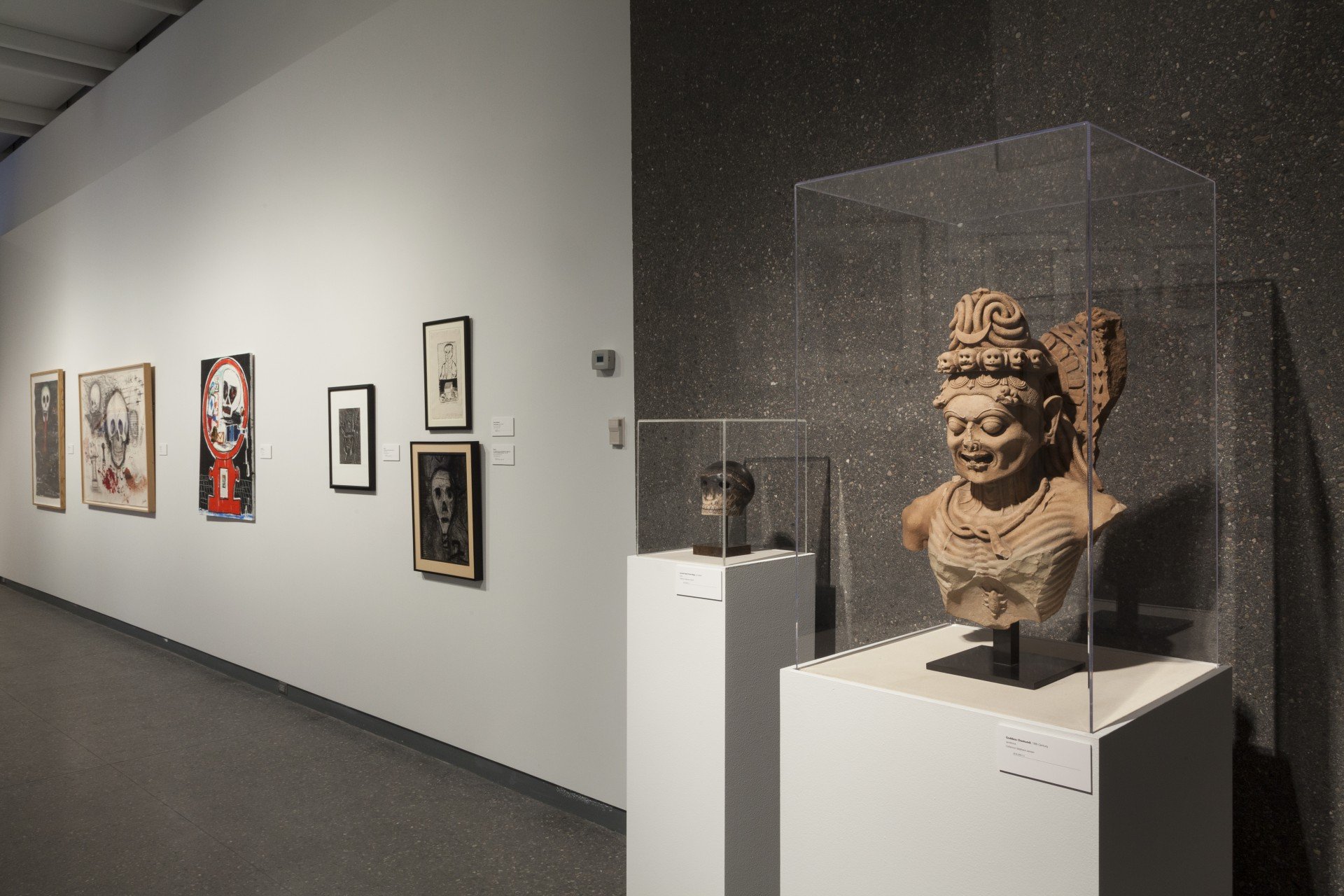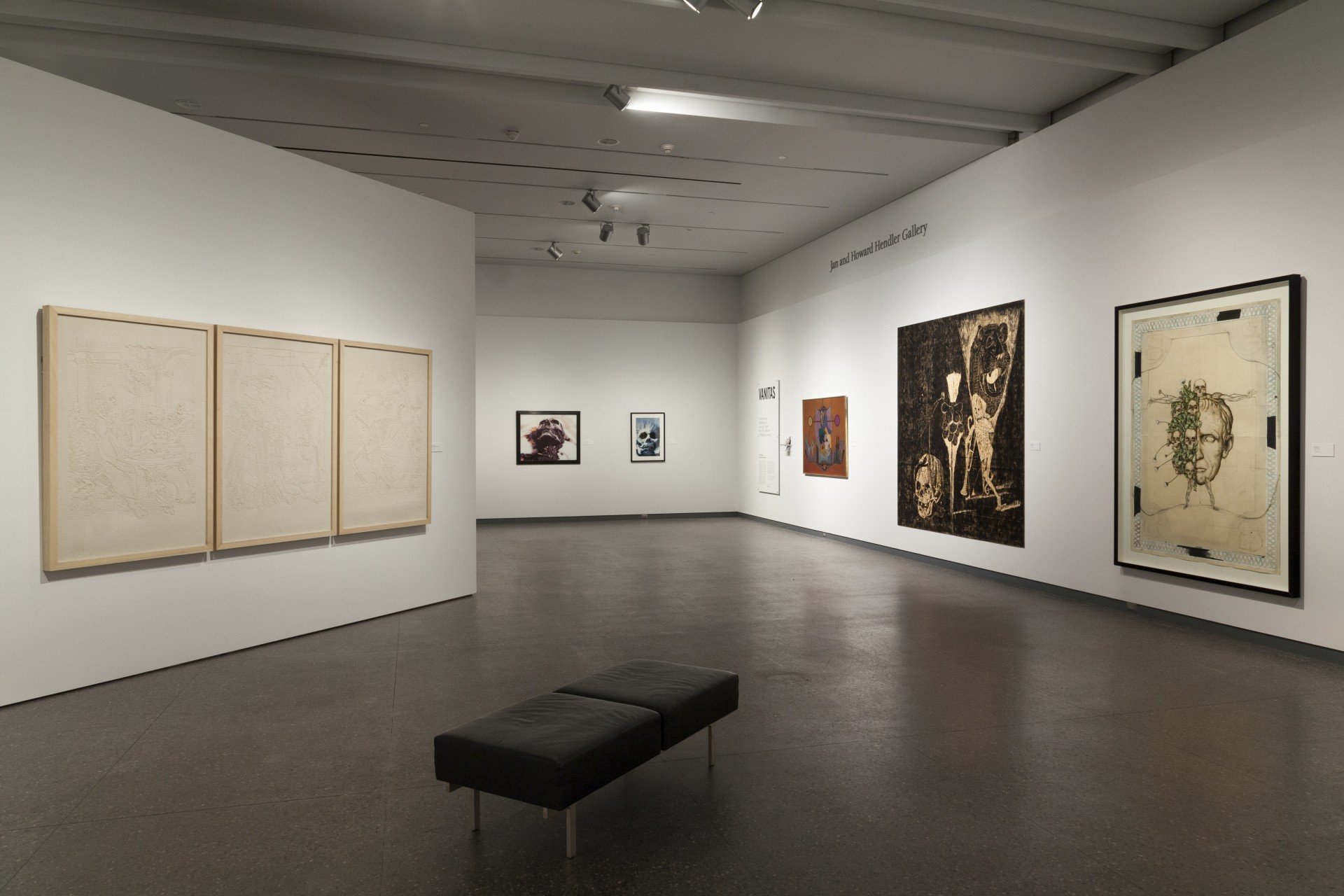In dialogue with art collector Stéphane Janssen
We sat down with Belgian art collector Stéphane Janssen, to whom the The Phoenix Museum of Art is dedicating a comprehensive exhibition.
Two of the four children of the Belgian collector Stéphane Janssen have opened a gallery – the Rodolphe’s one brings his name, while the Sebastien’s is called “Sorry we’re closed” – and that is possibly the clearest evidence of the passion for art that this man is able to convey. Born in 1936 from a main Belgian industrial family, he has spent most of his life buying artworks. In occasion of “Vanitas: contemporary reflections on love and death from the collection of Stéphane Janssen” – the exhibition The Phoenix Museum of Art is dedicating to his personal sight on this matter – he has kindly accepted to share with Conceptual Fine Arts a bit of his unique experience.

Conceptual Fine Arts: First of all, congratulation for your long career as a collector Mr. Janssen!
Stéphane Janssen: I’ve started when i was 16 years old. One day I was having lunch in Saint Tropez with my mother. There also were Paul Éluard and his wife, Tristan Tzara, Nadine Effront, and Oscar Dominguez, and i drank a pastis and said something stupid such as that art was what had finished with the impressionism. So Oscar said to go to his studio the day after and on a blackboard he drew from the bulls in the grotos of Altamira to Picasso. He then claimed: “you see it’s always art and it’s always the same thing”. So I borrowed what corresponded nowadays to twenty-five euros from my mother and bought a small painting by Dominguez. That was indeed the beginning. Oscar and I became good friends until he committed suicide, unfortunately, in ‘57. I have always been impressed by Vanitas as I think it’s aesthetically beautiful. Moreover, I had a companion who had HIV and died in 1993. We decided to be friendly with death because it’s something that happens to everybody anyway.
CFA: Is it something typical of Belgian culture?
Stéphane Janssen: Not at all. I lived in Mexico for six months when I was 22 years old and I was fascinated by their approach to death.

CFA: Can you elaborate?
Stéphane Janssen: On the 1st of November, the Day of the Dead, they have sugar skulls and they sell little skeletons. I wouldn’t say it’s a fest when somebody dies but those artifacts that they make on the 1st of November are indeed a very amusing part of death. I’ve also been to Bali often and even there when somebody dies, it’s a fest. They believe in life after death and this is the important thing.
CFA: Is Vanitas the main topic of your collection?
Stéphane Janssen: No, it’s not. I have about 3,000 works of art. I used to collect ceramics and I had a very big collection of them because my companion was a ceramist. Few years ago I gave it to the Arizona State University Ceramics Research Center in his name and in mine. At the beginning I collected a lot of CoBrA works, Appel, Pierre Alechinsky and Asger Jorn to name a few. Another painter that I love, but whose work is underrated at the moment, is called Roger-Edgar Gillet. He was a great friend of mine and I have a 125 paintings by him. I collect in depth, and when I really like an artist I follow him during his career, as long as I like what he does.
CFA: Are you the type of collector who likes to meet artists or do you prefer not to?
Stéphane Janssen: I’m friend with Joel-Peter Witkin, Duane Michals, Anthony Goicolea, Spencer Tunick. Together with this latter, we made nineteen naked installations. Sometimes I meet them and I don’t like them. That was the case of Karel Appel, whom I thought he was a very cheap person. Roger-Edgar Gillet was a great friend, Pierre Alechinsky is a friend. I like to meet the artist and if we have things in common, and we become friends then it’s wonderful. Two years ago I met a young artist and we became friend, his name is Lucien Murat, whose ancester was the sister of Napoleon I. He does wonderful work and I have a fantastic tapestry by him in the show.
CFA: Have you ever met Jean-Michel Basquiat?
Stéphane Janssen: I was a friend of Basquiat, actually it was difficult to be a friend of Basquiat because he was always high on drugs. He came to my house and hated everything I had, except some drawings by Hergé, the father of Tintin, who was also a friend of mine. The first show of my collection was at the Louisiana Museum in Denmark in 1986 and they made two posters, one with Basquiat and one was my portrait by Stefan De Jaeger, a Belgian artist who invented the Polaroid collage that David Hockney stole from him and funnily enough my posters outsold Basquiat.
CFA: Which is the last work you have bought?
Stéphane Janssen: It was a Damien Deroubaix work, who was in a show at the Vuitton Centre on the Champs Elysées, this year. I don’t buy as much now, for many reasons. This year I’ve bought only two works.
CFA: Is there any collector in art history that inspired your approach to art?
Stéphane Janssen: No, I buy what I like. If I don’t fall in love with a work, I don’t buy it. I like art that is sort of edgy, violent, strange…. I don’t like landscapes. One day a psychologist told me that If I bought violent art It was because I was not a violent person and he said that murderers buy Renoir. I need an equilibrium in my life, I’m not violent but I like violent art.

CFA: Is there any artwork you regret having bought?
Stéphane Janssen: No, I don’t regret anything. Sometimes I bought art, I got everything out of it and I sold it. I had some pieces by Lucio Fontana and after 20 years I didn’t like him anymore and I sold all of them, much too early but they didn’t do anything for me anymore. Abstract art finally doesn’t do anything for me. When my companion died in 1993, I couldn’t collect anymore the same things I used to collect because I was too sad. That’s when I really started collecting photos. Now I have probably around 1500 photos.
CFA: Do you think that art is a good investment?
Stéphane Janssen: Absolutely not. You have to store it, you have to insure it. I love to buy, so sometimes I have to sell some things to continue buying and I’m surprised by the prices on the market nowadays. For me it has never been a form of investment.
CFA: After so many years of art collecting, what suggestions would you give to young art collectors?
Stéphane Janssen: Buy what you like and if you like a portrait of Elvis painted on black velour, buy that because you would be very unhappy if you bought a Jean Dubuffet. Life must give you pleasure. I think that you wouldn’t live with somebody if you didn’t like that person and for me art is the same thing. I fall in love with a piece of art and if I don’t love it, I can’t live with it.
CFA: Someone considers collecting an illness….
Stéphane Janssen: Well, I don’t think it’s an illness; it’s an addiction but it’s better than being drunk or on drugs. And it also gives you more pleasure…well I don’t know because I’ve never taken any drug in my life, which is surprising because I lived in California. For me it is a question of love. I had a gallery between 1969 and 1975 and the one thing I hated to do the most was indeed selling.

CFA: Which is your favorite museum?
Stéphane Janssen: My favorite one is probably the Louisiana Museum, in Denmark. I love the place and i think it’s a fantastic museum. I love the Museum of Modern Art in New York too. In US I work a lot with the Arizona State University and I made a lot of shows with them. With regards to the Phoenix Museum, up to now, I’ve only given them some works of art while it took four years to get to this show.
CFA: Are you happy about the show at the Phoenix Museum?
Stéphane Janssen: I’m delighted. Last time I went, there were a lot of young people, between 16 and 20, and I was surprised by that. And the guard says that they have never seen so many young people. I think young people are interested by death and even aids, it’s part of their lives.
CFA: What plans do you have for your collection after this show?
Stéphane Janssen: The next show will be for my 80s birthday, in January 2016, at the Arizona State University, and it will be dedicated to Spencer Tunick. It will be fun, a lot of naked people in a very conservative state.
CFA: Which player do you believe comes first today? The auction houses or the museums?
Stéphane Janssen: Auction houses are crazy at the moment.
CFA: Funnily it seems that young artists are popularized by auction houses before museums. However, once their prices are soaring they feel the need to be certified, and this is when they turn to institutions for exhibitions.
Stéphane Janssen: I have a friend called Mark Bradford, who is an artist from Los Angeles. I met him 21 year ago. He showed at art fairs and suddenly he became the darling of the art world. Now he is selling his paintings for millions at auction and I’ve just found out he is going to have a big show in a museum. You know, when I arrived here in 1998, the director of the contemporary art at the Phoenix Museum asked me to give them money to buy a Mike Kelly. It’s a huge tapestry and I’ve bought it for them. Now Mike Kelly is so expensive and I’m very glad I bought it. It costed me 20,000 USD at that time, and it’s suddenly worth possibly a lot more now. There are two things that I love in life: to help young artists and secondly, to attract young people to love art and to expose them to art that I consider good. Both things are important for me. I’ve met a lot of artists in my life and it’s a great joy to see when they succeed, they become independent and manage to live from their art. I think it’s a great thing.

CFA: Have you ever bought an old master?
Stephan Janssen: No. When my grandfather died, we found out that a lot of works from his collection weren’t really what they were supposed to be. I don’t trust such world. I go to museums for that. I don’t want to have a Rubens. Nevertheless, when I said I don’t like landscapes it’s actually not true, I love Canaletto for instance. Do you want to know a funny story about the so called old masters?
CFA: Yes, please.
Stéphane Janssen: One day my daughter was 16 years old and she asked me to buy her a plane ticket to go to Florence because she wanted to go to a party there given by a friend of her. I agreed but at one condition, I told her that she would go, visit the Uffizi and bring me back the ticket. And of course, she said ok and brought me the ticket. Years later however she confessed that she just went in front of the museum, picked up a ticket from the sidewalk and never went in the museum!
November 17, 2022
